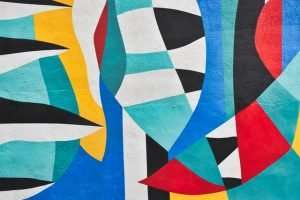The Alcohol Ink Process is a very simple process that can be used to create beautiful art. It’s so simple you can make your own inks, brushes and paper by following just a few basic instructions.
This blog is about the process and how you can use it to create your own unique art. It’s all free! Just follow along, get creative and I’ll show you how easy it is to make amazing art by yourself. . . .
I also want to share my experience of creating art with alcohol inks. I’ll tell you about some of my experiments and what I learned from them. Maybe you will learn something from them too!
This is a blog about how to create alcohol ink art. It is intended as a guide for beginners and an alternative to the expensive process of purchasing ready made art. The primary focus of this blog is on the use of alcohol inks and their unique properties. The process for using alcohol inks is very simple, fun and addicting. Alcohol ink can be used to create one-of-a-kind art on a variety of surfaces.
Learn about the background, history and techniques of alcohol inks as well as some great tips for getting started creating your own masterpieces with alcohol inks. You will find helpful information on the benefits of using different kinds of paper and accessories needed to create high quality masterpieces.
I hope you enjoy reading and exploring this blog as much as I enjoy creating it!
One of the great things about alcohol ink is that it is an inexpensive way to create art. You can buy a set of alcohol inks that includes 24 different colors for less than $20.00. With those alcohol inks you can create original works of art.
T-shirts, scrapbooks, and other items are great for using alcohol inks on because they are porous. That means that the ink soaks into the cloth and stays there instead of just sitting on top like paint does. Alcohol inks are also washable which makes them great for clothing items where kids tend to get messy. I have successfully washed my daughter’s t-shirt after she spilled grape juice on it and it washed out without any problems!
If you would like to see examples of how I used alcohol ink to create art, check out my alcohol ink blog at www.a-girl-and-her-ink.blogspot.com or my Facebook page at www.facebook.com/aGirlAndHerInk . If you would like to purchase alcohol inks, visit my shop at http://www.etsy.com/shop/AGirlAndHerInk?ref=si_shop or email me at A_Girl_and_Her_Ink [
There is a wonderful new process for creating art with alcohol inks. Alcohol inks are watercolor inks that when applied to a watercolor paper and dried with a heat gun or hair dryer, creates a raised surface.
The combination of the raised surface, the translucent quality of the ink, and the high archival quality of the final product makes this art form very exciting. This process has been used for years by professional artists to create fine art prints and gallery pieces. The unique properties of this medium have been applied to create fine art books.
What is great about this process is that anyone can learn how to use it. There is no need to be an artist, or an expert at using any particular tools or materials. All you need is some patience and imagination, and you can create beautiful art. It has been my experience that creativity is not reserved for those who can draw well, or have advanced degrees in arts education. Creativity is available to everyone!
I am a self-taught artist who loves art but doesn’t have any formal training. I make my living as a computer programmer, which means that when I get home most of the time I just want to relax and not think too hard. I do my art because it is something that I love to do and don’t expect to get rich doing, but it is great to have some extra cash to go out occasionally.
The alcohol ink process started as a hobby just over three years ago while working on some personal projects using Photoshop. While playing around with some different effects, I noticed something: Some brushes had an interesting look when used in combination with each other but worked better when there was something behind them. At this point, I hadn’t gotten into doing much abstract work yet, so I decided to put some text up on the image and see how that worked.
What really drew me in was the ability to create different textures in the background. The main thing is that it isn’t paint or pencils or any other traditional medium. It is completely digital and can be made from scratch or manipulated from existing images found online. This allows for unlimited creativity, since there are few limitations on what you can do with these images.
I find the process of creating
I’m a big fan of the new alcohol inks. They are the pen-and-ink equivalent of spray paint — permanent, cheap, and easy to use for beginners.
The inks are almost exactly what they sound like: colored rubbing alcohol. The color comes from dyes that are dissolved in the alcohol, not suspended like watercolors or pigments. In fact, they’re nonpareil (or “nonpariel,” if you’re British) dyes, the same ones used to color candy.
Each pen contains a reservoir full of rubbing alcohol and the dye. You load a brush with ink by dipping it into the reservoir, then drawing it on paper until some of the alcohol evaporates and the ink thickens. You can control how thick or thin you make it by how long you draw it on paper; wetter is thinner and vice versa. Then you let it dry, which happens pretty quickly.
It’s fun to work with because everything is so immediate — there’s no waiting for watercolor to dry or acrylics to cure before you can do something else with them, no separate drawings for underpainting. And there’s an instant reward: unlike watercolors or acrylics, the ink appears on paper as soon
Ink art is a great way to get in to the art world for little cost. Unlike buying canvases and paint, you can create a piece of art from the comfort of your own home.
Tintoretto, famous Italian Renaissance artist, used ink in his work. He was known as “the father of oil painting.” His use of glazes and burnishing techniques is still studied today. He created “The Last Supper” in 1592-1594 using only oil and ink. Some of his other works include “Christ Washing the Disciples’ Feet”, “The Crucifixion”, “The Baptism of Christ”, and “The Golden Age”.
They say that a picture speaks a thousand words… so let this picture speak for itself!


